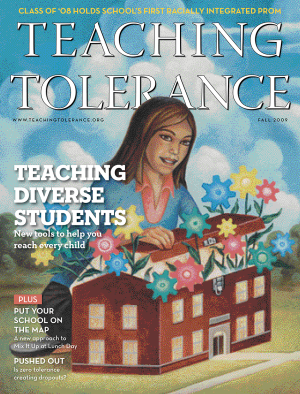
Colorblindness: The New Racism?
The Fall 2009 issue interrogates the statement, “I don’t see color.” Racial “colorblindness”—the idea that ignoring or overlooking racial and ethnic differences promotes racial harmony—erases students’ identities and closes educators’ eyes to the experiences of their students.
This issue highlights the importance of understanding and affirming student experiences. For white educators, that means learning to talk about race and racism. For all educators, that means practicing culturally relevant instruction. It involves looking at school policies that may push children of color out of school and into the justice system. Read on to learn about these critical steps—and more.
Subscribe today, and never miss a story.
Features

Colorblindness: the New Racism?

Prom Night in Mississippi

Our Journey to Kindergarten

What Can This Student Teach You About the Classroom?

Learning to Roar

Speak Out for Understanding

Relevant: Beyond the Basics

Inclusion on the Bookshelf

Pushed Out
